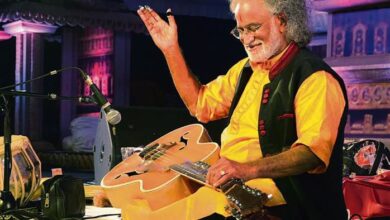Winter Solstice 2023: How is the holiday observed throughout the world? View these 7 varied customs
Astronomy buffs, take note! Prepare for a thrilling stargazing event to commemorate the approach of winter in the northern hemisphere. The winter solstice, which occurs on December 21 or 22, is a significant yearly occasion that denotes the longest day and the shortest night of the year. The event is scheduled for Friday, December 22, at about 8:57 a.m. This year. Please mark your calendars for that day. This occurrence, which has significant cultural, historical, and astronomical implications, is rooted in the Earth’s axial tilt. For millennia, people have acknowledged this celestial occurrence and have commemorated the Sun’s “return” via a range of historical and cultural traditions. Let’s examine the many ways it is observed throughout the globe.

Customs for the Winter Solstice from Across the Globe
Encyclopaedia Britannica lists the principal winter solstice customs from each country.
1. Zhi Dong
In China, Dong Zhi, or the “arrival of winter,” is a big holiday. During this season, family get-togethers to celebrate the new year are usual. According to the traditional Chinese lunar calendar, the event often takes place on December 21st or 23rd. It is said to have started as an end-of-harvest festival when laborers would return from the fields and give their families a piece of their laborers’ output. Special foods, such as tang yuan or sticky rice balls, are enjoyed.
2. The Day of Lucia
During the winter solstice, Scandinavians commemorate St. Lucia’s Day, a festival of lights. Its roots may be found in the Norse solstice when bonfires were lit throughout the longest night in order to fend off spirits. It is commemorated today in honor of St. Lucia, a Christian martyr. Girls dress up in white costumes with red ribbons and crowns made of candles to celebrate St. Lucia.
3. Antarctica in midwinter
Because of the researchers who spend the long, dangerously cold season there, even Antarctica celebrates the solstice. While those of us in the northern hemisphere enjoy the longest day of the year, those in the southern hemisphere celebrate midwinter. Celebrate with special meals, movies, and maybe even handcrafted presents.
4. Saturnalia The two most closely connected holidays in modern times are probably Saturnalia, an ancient Roman event, and Christmas. This event, which coincided with the winter solstice, signaled the end of the planting season. Games, feasts, and gift-giving took place over many days, during which the social structure was turned upside down. For a brief while, slaves were not expected to work and were treated equally.
5. Inti Raymi
This solstice event is held in June instead of December. But for Peru, this is a winter solstice and an Incan celebration honoring the Sun deity. The Incas celebrated these ceremonies, which included feasts and animal or maybe kid sacrifices before the Spanish conquistadors arrived. The Spanish banned the celebration, but it was revived in the 1900s and is still held today, although with fictitious sacrifices offered in lieu of real ones.
6. Yalda
Yalda, or Shab-e Yalda, is a Persian event that honors the winter solstice in Iran and has been observed for thousands of years. This is the last day of the Persian month of Azar. Traditionally, Yalda is celebrated as the birthday of Mithra, the sun god, and the victory of light over darkness. Eating special meals like pomegranates and almonds, families get together to celebrate. Some even stay up late to welcome the sun.
7. The Soyal
The winter solstice, Soyal, is celebrated by the Hopi Tribe in northern Arizona. Ceremonies and rituals include dancing, cleansing, and sometimes gift-giving. At the time of the solstice, Hopi welcome the kachinas, the spirits who defend the mountains. Various ceremonies and blessings include the usage of prayer sticks.







